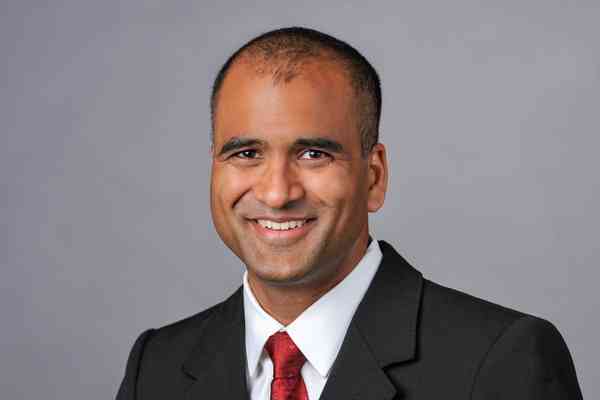
Total Joint Replacement
Patients come to Mid-Maryland Musculoskeletal Institute's Joint Replacement Physicians seeking long-term relief from arthritis, injury and overuse. We provide the most advanced total joint replacement and revision techniques available so our patients can regain the ability to participate in activities previously limited by pain. Our personal approach to joint replacement and focus on the whole patient are designed to alleviate the anxiety that many patients feel about pursuing treatment for their joint pain.
CAO serves patients in Virginia, West Virginia, Washington D.C., and Maryland.
What is Joint Replacement?
Joint replacement is a surgical procedure in which an arthritic or damaged joint is removed and replaced with an artificial joint, called a prosthesis. The materials used are designed to enable the joint to move just like a normal, healthy joint. The doctors at MMI perform total hip and knee as well as partial knee replacements in addition to revisions for previous hip and knee replacements.
Who Should Have Joint Replacement Surgery?
The vast majority of joint replacement patients are people who suffer from pain, stiffness, and loss of function because their joints have worn out due to arthritis. After all non-surgical treatments have been exhausted, joint replacement surgery may be recommended for these patients.
What is ROSA Knee Robotic Technology?
You’re unique, and so is your individual anatomy. That’s why Zimmer Biomet offers ROSA® Knee robotic technology. ROSA, which stands for Robotic Surgical Assistant, is designed to help your specially trained surgeon tailor the placement of your knee implant just for you. Here, we will explain what makes the ROSA Knee System unique, what to expect preoperatively, what will happen with ROSA Knee during surgery and what to expect after your surgery.
Why ROSA Knee?
Getting a precise knee implant fit is important to your comfort and overall experience following knee replacement surgery. ROSA Knee uses data collected before your surgery (preoperative) and during your surgery (perioperative) to inform your surgeon of many details related to your unique anatomy that may affect your implant fit. By using this data to make more informed decisions, your surgeon is able to plan for and carry out a personalized surgery based upon your individual needs.
Candidates often experience severe pain from arthritis that limits everyday activities such as:
- walking
- bending
- going up and down stairs
- getting in and out of chairs
Joint Replacement May Be Indicated When:
- Non-Surgical treatments are not effective:
- Medication
- Physical Therapy
- Steroid Injections
- Arthroscopic Surgery
- Synthetic Fluid Knee Injections
- X-rays reveal arthritis
- Joint pain interferes with daily activities
- Total Joint Replacement patients have often had unsatisfactory results from Non-surgical options.
Other reasons to consider surgery may include:
- moderate or severe pain in the joint even while resting
- swelling of the joint that does not improve with rest or medication
- Joint stiffness
- Popping grinding and grating sounds in the joint
A Personalized Surgical Experience
Before Surgery
Your preoperative experience will be like that of most total knee patients. But, unlike traditional knee replacement methods, with ROSA Knee, a series of x-rays may be used to create a three-dimensional (3D) model of your knee anatomy. This 3D model will enable the surgeon to plan many specifics of your knee replacement prior to your surgery.
During Surgery
The intraoperative surgical procedure using ROSA Knee is similar to traditional total knee replacement, but with a robotic assistant. Your surgeon has been specially trained to use ROSA Knee in order to personalize the surgical approach for your unique anatomy. It’s important to understand that the robot does not operate on its own. That means it does not move unless your surgeon prompts it to. Your surgeon is still in the operating room the entire time and is making all of the decisions throughout your surgery.
During your procedure, ROSA Knee utilizes a camera and optical trackers attached to your leg to know exactly where your knee is in space. Think of it like a very detailed global positioning system (GPS) that you might use in your car. If your leg moves even a fraction of an inch, the robot can tell and adjusts accordingly. This helps ensure that the plan your surgeon put into place is executed as intended. Throughout your surgery, ROSA Knee provides your surgeon with data about your knee. This information, combined with your surgeon’s skill, helps them know how to position your implant based on your unique anatomy.
After Surgery
Following surgery (the postoperative phase), you will be hospitalized based upon the recovery plan your surgeon decides is best for you. This hospitalization may range from one to three days. Recovery time varies, but most people should be able to drive after two weeks, garden after three to four weeks, and golf after six to eight weeks. Your surgeon will tell you when and what activities you can return to, and what activities to avoid.
Important Information
While uncommon, complications can occur during and after surgery. Some complications include, but are not limited to, infection, blood clots, implant breakage, malalignment and premature wear, any of which can require additional surgery. Although implant surgery is extremely successful in most cases, some patients still experience stiffness and pain. No implant will last forever, and factors such as your post-surgery activities and weight can affect longevity. Be sure to discuss these and other risks with your surgeon.
There are many things that your surgeon may do to minimize the potential for complications. Your surgeon may have you see a medical physician before surgery to obtain tests. You may also need to have your dental work up-to-date and may be shown how to prepare your home to avoid falls.
The decision to have surgery is sometimes difficult. We hope that this information has helped you understand the ROSA Knee System so that you can make the best decision for yourself. This information is not intended to replace the human experience and counsel of your orthopedic surgeon. If you have any further questions, please speak with your orthopedic surgeon.
A joint replacement isn't usually a first-line of treatment. If you know you need one or are looking for alternative treatments, contact our office today. Contact us at 301-694-8311 or schedule an appointment for you to learn what we can do to help you!
Providers
Videos
-
 ProcedureMini Total Hip Replacement
ProcedureMini Total Hip Replacement -
 ProcedureTotal Hip Replacement
ProcedureTotal Hip Replacement -
 ProcedureTotal Hip Replacement, Anterior Approach
ProcedureTotal Hip Replacement, Anterior Approach -
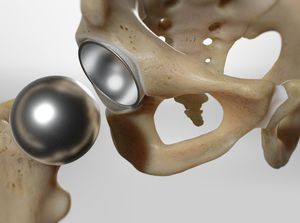 ProcedureTotal Hip Resurfacing
ProcedureTotal Hip Resurfacing -
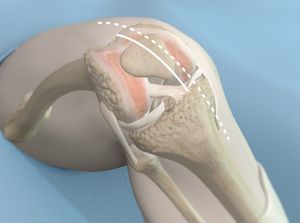 ProcedureMini Incision Total Knee Replacement
ProcedureMini Incision Total Knee Replacement -
 ProcedureTotal Knee Replacement
ProcedureTotal Knee Replacement -
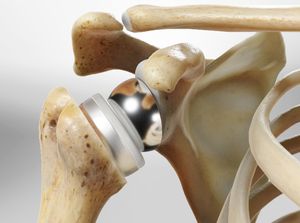 ProcedureReverse Total Shoulder Replacement
ProcedureReverse Total Shoulder Replacement -
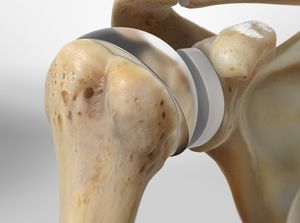 ProcedureTotal Shoulder Replacement
ProcedureTotal Shoulder Replacement
